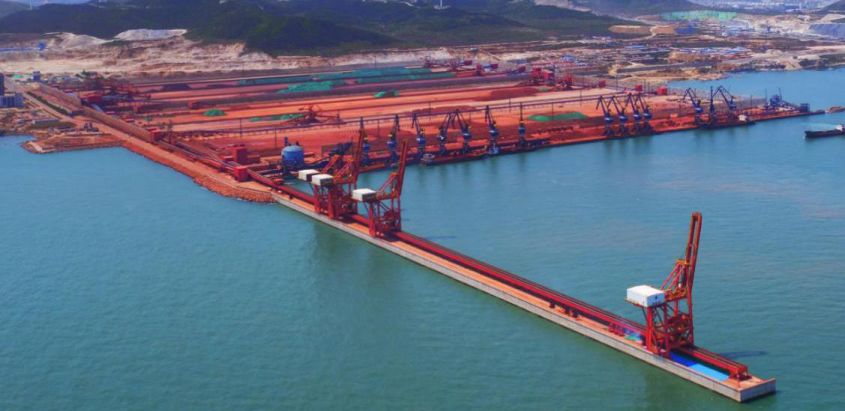1. Port and Terminal Information
1.1 Operational Hours and Terminals:
– 24/7 operations at all terminals including Yantai International Container Terminal (YICT), Yantai Bulk Cargo Terminal (East and West), Yantai Oil Terminal (North and South), and Yantai Ro-Ro Terminal
– Special cargo operations (hazardous materials, live animals, oversized cargo) require 24h prior notice via VHF Ch 12 or email to ytportops@yantaiport.com.cn (verified)
1.2 Vessel Size Limitations:
– Container vessels: Max LOA 340m (YICT Berths 1-3), beam 50m, draft 15.5m (16.0m at high tide with pilot approval)
– Bulk carriers: Max LOA 300m (West Basin), beam 48m, draft 16.0m (16.5m spring tides)
– Oil tankers: Max LOA 250m (South Pier), beam 45m, draft 14.8m (15.3m with tidal allowance)
1.3 Air Draft Restrictions:
– Dongjiang Bridge: 55m clearance (Shandong MSA Notice 2023-12)
– Temporary reductions to 53m possible during maintenance (monitor NAVTEX and VHF Ch 12)
1.4 Berth Specifications:
– Container: YICT 1-8 (1-3 for vessels >300m, 4-8 for feeders)
– Bulk: BTW 1-4 (West Basin), BTE 1-3 (East Basin)
– Oil: OTS 1-2 (South), OTN 1 (North for chemical tankers)
1.5 Additional Services:
– Draught surveys: Available with 48h notice (MSA-certified surveyors only)
– Bunker surveying: Mandatory for vessels taking >500 tons fuel
2. Navigation and Channel Requirements
2.1 Channel Parameters:
– Main channel: -16.5m CD, width 300m (200m at turning basin 37°32.5’N 121°24.2’E)
– Secondary channels: -14.0m to bulk terminals, -12.5m to oil terminals
– UKC requirements: 10% of draft or 1.0m (<100,000 DWT), 15% or 1.5m (>100,000 DWT)
2.2 Navigation Systems:
– Compulsory AIS transmission within 30nm of port
– LRIT reporting for all vessels >300 GT (SOLAS V/19-1)
– VHF monitoring: Ch 16 (distress), 12 (port operations), 08 (pilotage)
2.3 Passage Planning:
– >10,000 GT vessels: Submit plan 24h prior via ytmsa@msa.gov.cn
– Must include: Tidal calculations, contingency anchorages, emergency contacts
2.4 Pilotage Requirements:
– Mandatory for: Vessels >10,000 GT, all tankers, ships with hazardous cargo
– Pilot boarding area: 37°35’N 121°25’E (2nm NE of breakwater)
– Pilot ladder requirements: SOLAS compliant, with spreaders and safety line
3. Anchorage Regulations
3.1 Designated Anchorages:
– No.1 (37°36’N 121°26’E): Max LOA 200m, depth 25m, soft mud
– No.2 (37°34’N 121°28’E): Max LOA 350m, depth 30m, sand/clay
– Emergency: 37°30’N 121°22’E (distress vessels only)
3.2 Anchoring Procedures:
– Minimum scope: 5:1 (<30m depth), 7:1 (>30m)
– Position checks: Hourly (day), 30-min (night)
– Anchor watch: Continuous with engine ready (MSA Order 2018-6)
3.3 Prohibited Activities:
– Cargo operations without MSA approval
– Bunkering without licensed barge
– Any discharge (zero tolerance policy)
4. Cargo Operations
4.1 Hazardous Materials:
– Class 1: 48h notice with MSDS and stowage plan
– Class 2.1: No operations during thunderstorms
– Class 7: Restricted to YICT-8 with special handling
4.2 Bulk Cargo Specifications:
– Grain: Wheat/barley ≤14.5% moisture, rice ≤13%
– Coal: Trimmed to ≤5° angle of repose
– Iron ore: TML must exceed FMP by ≥1%
4.3 Container Operations:
– VGM: ±5% or ±1t tolerance
– Reefers: Pre-cool certificates required
– DG containers: Mandatory segregation checks
4.4 Special Cargo Handling:
– Project cargo: >100t units require advance stability plans
– Live animals: Veterinary clearance 72h prior
5. Safety and Emergency
5.1 Emergency Contacts:
– VTS: VHF 16/12, +86-535-12395
– Medical: Port clinic +86-535-6895120
– Pollution: +86-535-6895185
5.2 Mandatory Drills:
– Monthly fire/abandon ship drills
– Quarterly oil spill drills (tankers)
5.3 Winter Operations:
– Deck anti-icing required
– Synthetic mooring lines prohibited
– +20% minimum manning
5.4 Security Measures:
– ISPS Level 1: Standard patrols
– Level 2: Armed guards required
– Level 3: Port closure
6. Environmental Compliance
6.1 Emission Controls:
– Fuel sulfur ≤0.1% in ECA
– Shore power mandatory from 2024
6.2 Ballast Water:
– Exchange >50nm or use approved systems
– Reporting form required 6h pre-arrival
6.3 Waste Management:
– Segregated garbage disposal
– Oily waste through licensed contractors
6.4 Noise Restrictions:
– Night operations <75dB
– Whistle use prohibited
7. Crew Requirements
7.1 Shore Access:
– Valid passport and seaman’s book required
– No COVID restrictions (MSA 2023-5)
7.2 Medical Services:
– Port clinic for basic care
– Hospital transfers available
7.3 Crew Changes:
– 72h notice required
– Full documentation needed
7.4 Training:
– Port induction for officers
– Valid tanker safety certificates
8. Special Circumstances
8.1 Typhoon Procedures:
– Signal No.8: Operations cease
– Double mooring lines >15m/s
8.2 Fog Management:
– <1,000m: Movement restrictions
– <500m: All movements prohibited
8.3 Labor Disputes:
– Minimum 50% workforce during strikes
8.4 War Risks:
– Special insurance clauses
– Armed escort available
9. Documentation
9.1 Pre-Arrival:
– Port clearance
– Crew list
– Cargo manifest
9.2 Operational:
– Garbage/oil record books
9.3 Post-Departure:
– Outward clearance
– Port log extract
9.4 PSC Focus:
– Updated ECDIS
– Valid certificates
– PMS records






